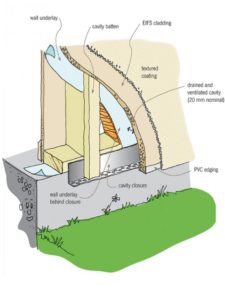If you live in New Zealand and you have an interest in property in some way, shape, or form, you would have heard of leaky homes. Some houses built after the mid-1990s have not withstood New Zealand weather conditions and most likely do not comply with the current New Zealand Building Code.
We have compiled a list of common signs or risk areas for you to look out for in relation to leaky homes. Firstly take a look at the interior of the house. Below is a list of things to look out for when looking at a property.
- Sagging of ceiling linings
- Corrosion of fixings such as screws and nails
- Uneven floor surfaces, like the lifting of vinyl
- Mould or fungi formation on surfaces (although this can also be due to poor ventilation)
- Musty smells
- Swollen materials such as skirting and architraves
- Staining or discolouration of materials or surfaces
- Stained or rotting carpet, or rusting of carpet fixings
- Cracking in plaster
Next, take a look at the exterior of the building. Below is a list of things to look out for.
- Type of cladding
- Cladding fixing
- Cladding detailing
- Condition of cladding
- Age
- Windzone
- Design
- Roof type
- Soffit depth
Examples of these are shown in the numbered diagram.
- Flat roofs, or roofs with parapets
- Roof to wall junctions
- Pergola fixings
- Handrail fixings
- Lack of flashings to windows and other penetrations
- Decks over living areas
- Balustrade to deck or balustrade to wall junctions
- Clearances at bottom of claggings/levels
- Levels of ground outside is above interior floor level

